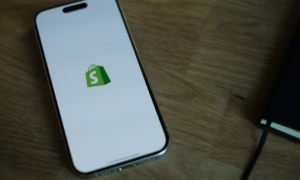Many modern electronics designs use surface-mount technology (SMT). Even though it is possible to solder some SMT parts with a conventional soldering iron, this is not advisable for components with solderable surfaces on the underside of the part such as Ball Grid Arrays (BGAs). Components with complex and narrowly spaced leads cannot be soldered properly with traditional methods.
The whole process can be made more convenient and smoother by the application of hot air soldering, which accommodates robust soldering joints with convenience. Moreover, some SMT components like ball grid arrays (BGAs) should only be soldered or reworked by hot air soldering or by InfraRed (IR) soldering).
There are multiple factors in hot air soldering which are fundamentally important to produce smooth solder joints;
How to use the hot air soldering station.
There are basic steps that need to be observed for safety and compliance. Most are common sense, but if you want official certification of your processes, you need to consult a globally recognised IPC training company such as A.R.T Ltd
Choose Appropriate Nozzle: Various replaceable nozzles will provide different amounts of airflow. Choose the appropriate tip as per the size of your components and attach it to your hot air station.
Turn It on: The heating element will fire up and start blowing hot air. Let it reach the set temperature by waiting for a few seconds before you start soldering.
Adjust Temperature and Air flow: There are controls on the hot air soldering station to set the appropriate temperature and amount of air flow. Temperature setting is dependent upon the applied solder paste; set temperature slightly higher than the melting point of your solder paste. The volume of air flow should be as high as possible without disturbing adjacent SMT parts, but not high enough to blow your subject component away.
Cool It Down: After finishing your work, put your hot air gun safely back to the station. Do not leave it anywhere else on your working station as it will be hot enough to damage your working space. Moreover, some hot air stations are equipped with self-cooling mechanisms to increase longevity.
Hot air soldering should be performed using the following steps;
In the beginning, apply an adequate amount of solder paste to your PCB. Control of paste volume is important because using excess amounts of solder paste will cause solder bridges. This is where the use of a stencil will help if available.
Place the component carefully in alignment with the lands on the PCB. You may have to hold it in place with tweezers while applying hot air. Placement of the hot air tip is crucial here. Make sure it is at the correct angle with the surface so that it does not blow away your component. In addition to that, the distance of the nozzle from the PCB should be optimum; If the nozzle is too close, hot air might damage the PCB, or too far and it won’t transfer heat adequately.
To conclude, the three variables of temperature, air pressure and time need to be adjusted for producing ideal solder joints.
Rework of an existing board using a hot air station
Apart from production assembly, the hot air soldering method can also be used for reworking defective PCBs. Hot air soldering is proven to be an easier and cleaner rework and repair method than regular hand soldering methods.
Hot air reworking can be used in following cases;
- Wrongly polarized components: Parts that are soldered backwards or have shifted from the original position can be fixed with a hot air gun. This can include ICs, diodes and capacitors.
- Cold joints: When solder is not heated enough it results in cold joints, which can be easily fixed by applying hot air.
- Removing damaged ICs: Many times, during application ICs get damaged. In such a scenario hot air reworking is the best method to remove a defective IC, rather than using a soldering iron.
Does this require a good level of skill?
When it comes to SMT components, beginners should always prioritize hot air soldering over hand soldering as it is the least dependent upon skills and experience. However, it is not reliable to use for through-hole components or extremely small parts.
Contact Advanced Rework Technology (ART) today for advice and guidance. We offer a comprehensive set of training courses covering all levels of certification up to and including all IPC courses.
If you do not have the globally-recognised IPC certification for designers and assembly operators within your company and you want to increase your customers’ confidence, contact Advanced Rework Technology (A.R.T.). They also offer bespoke training that can be based entirely around the requirements of your company and even specific products, with all theory and practical equipment supplied by them.
Email info@rework.co.uk. Telephone 01245 237083.































